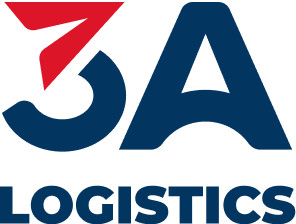In 2023, the Vietnamese Freight and Logistics market is estimated to be valued at 45.19 billion USD, with expectations to rise to 65.34 billion USD by 2029. This growth reflects a compound annual growth rate (CAGR) of 6.34% from 2023 to 2029. The logistics sector plays a vital role in Vietnam’s economy, especially as the country experiences rapid economic growth and increasingly integrates into international trade agreements. A high-quality logistics system is key to enhancing the competitiveness of Vietnamese businesses in the global market, providing export opportunities, and attracting foreign investment. This sector helps to optimize costs and time in the supply chain, ensuring the efficient movement of goods from origin to consumer.
The logistics industry in Vietnam includes four main activity groups: forwarding, transportation, ports, and warehousing. Forwarding services involve organizing transportation, warehousing, storage, documentation, and other related activities. Transportation activities are intermediary steps that help move goods from the production site to the distributor. Port activities support waterway and air transport, including services for ships and airplanes at seaports and airports. Warehousing activities relate to the storage of raw materials, semi-finished, and finished products, playing a crucial role in the supply chain.
In 2023, about 40% of companies in Vietnam’s logistics sector have integrated digital services into their daily operations, including transportation and warehouse management. The adoption of advanced technology is increasingly being applied by enterprises in this sector. This change aims to enhance service quality, reduce logistics costs, and improve competitiveness, especially in the context of challenges posed by the COVID-19 pandemic. Freight forwarding businesses are also focusing on increasing the added value of their 3PL (Third-Party Logistics) services.
The explosion of e-commerce has significantly driven the development of express delivery and last-mile delivery services. These services are essential for the operation of e-commerce channels, demonstrating the close link between the growth of online retail and logistics services.
Regarding transportation methods, road transport remains the most common in Vietnam, while sea transport accounts for the largest proportion of goods due to the actual distance transported. Rail and air transport represent a smaller market share and have decreased compared to previous years.
Challenges in the industry include high operational costs and a lack of high-quality infrastructure, hindering the expansion of the delivery and express delivery markets.
Specifically, the total logistics costs in Vietnam correspond to 20.9% of the country’s GDP. This figure is much higher than in regional countries and nearly double that of developed countries, where logistics costs account for about 7-9% of GDP. The global average is 14%, indicating that Vietnam’s logistics costs are significantly higher than normal. Moreover, within these total logistics costs, transportation costs constitute a large part, accounting for over 60%. This rate is double that of other countries, where transportation costs typically account for 30-40% of total logistics costs. Combined with the challenges of subpar infrastructure, this significantly affects the expansion and efficiency of the logistics and delivery market in Vietnam.
To improve freight transportation management, Vietnam is focusing on upgrading infrastructure and investing in technology. An important part of this strategy is investment in transport infrastructure, considered a key and primary task in 2023. Recently, the Vietnamese government has approved a plan to spend between 43 to 65 billion USD for building and upgrading road, rail, inland waterway, maritime, and air transport infrastructure from 2021 to 2030. Additionally, in 2023, the total public investment capital allocated is over 700,000 billion VND, an increase of 25% compared to the 2022 plan.
Strengthening connections and cooperation between businesses in the logistics sector and between logistics and manufacturing/export businesses is also a challenge. The logistics industry in Vietnam lacks a network of large-scale enterprises with market leadership, and the number of companies offering integrated services like 3PL and 4PL is limited. This situation makes it difficult for Vietnamese logistics businesses to compete with foreign companies operating in the market.

Furthermore, the global macroeconomic environment, particularly the ongoing war between Russia and Ukraine and rising inflation, poses additional challenges. The potential for a global recession and reduced consumer spending could impact the demand for logistics services, with a recovery in demand expected towards the end of 2023.
Effective management of freight transportation plays a crucial role in promoting Vietnam’s socio-economic development. By addressing current challenges and leveraging development opportunities, the Vietnamese freight transportation sector can achieve strong growth, contributing to the overall prosperity of the country.













